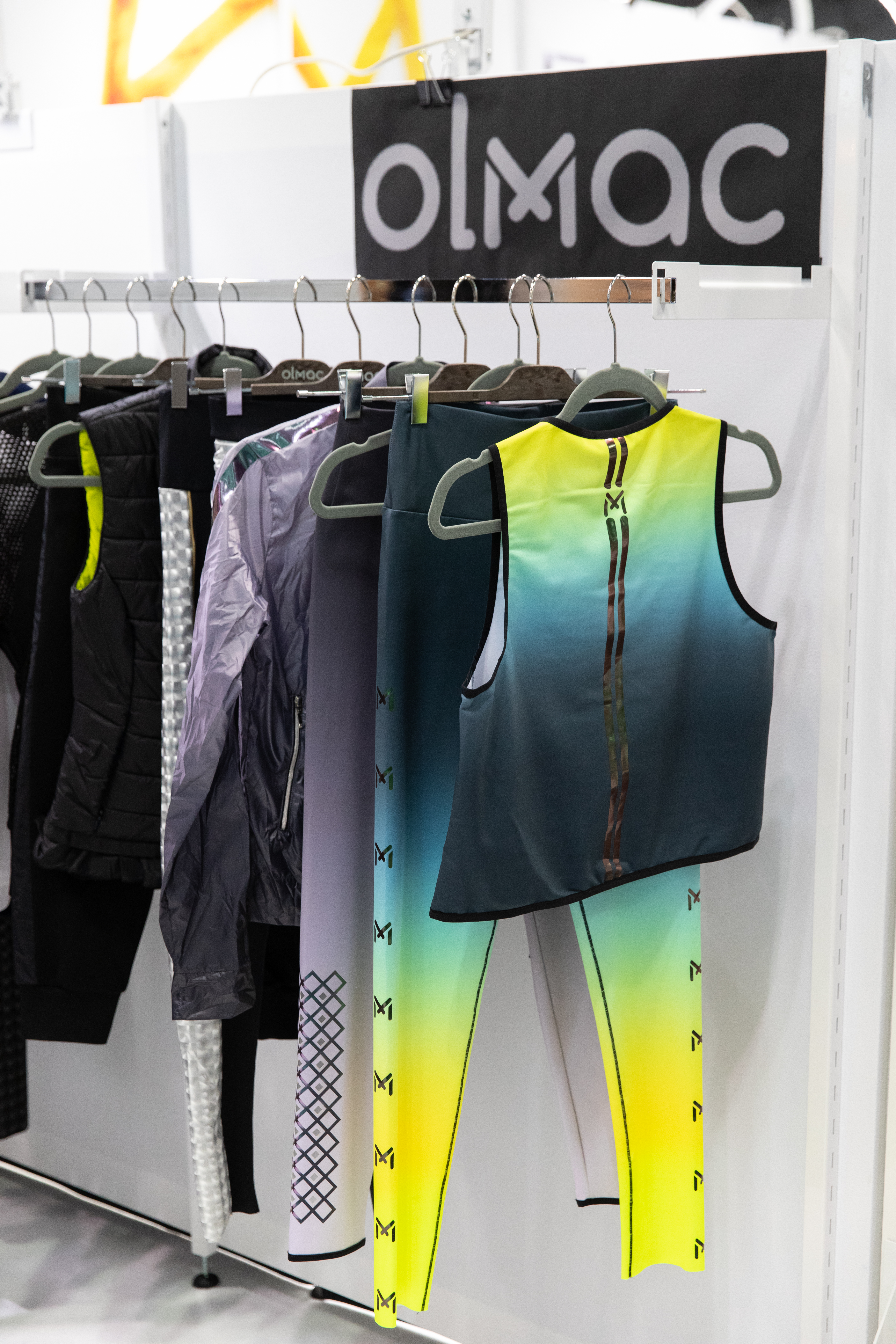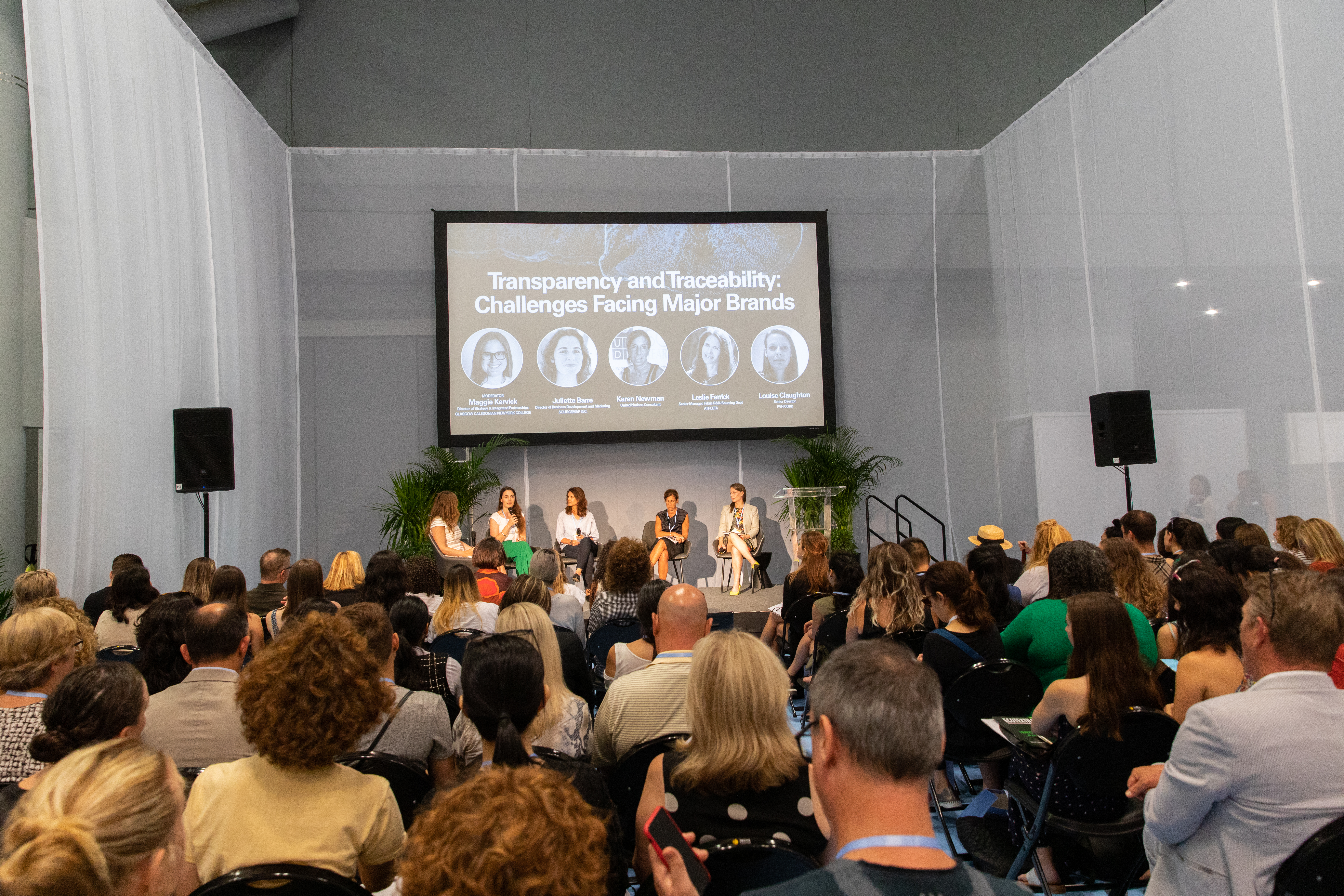From Portugal to Sustainability, Opening Day Shows Sourcing’s Shifts
When it comes to sourcing in Portugal, brands and retailers know to expect quality.
And at a time when sourcing has been upset over changing trade relations, companies are looking for new places to manufacture product.
A focus on Portugal for this year’s Texworld USA, highlighted the country’s and companies capabilities.
“Portugal is able to offer tradition and industrial know-how at the textile level, with capacity for constant renewal and resilience,” said Monica Afonso, CEO of Marjomotex, a bottoms producer and an exhibitor in the Portugal Pavilion. “The differentiation of products by creativity, fashion and design, as well as by technology, materials, processes and functionalities, are key features for the international recognition of the label ‘Made in Portugal.’”
Marjomotex’s core business is denim, but the company is also showcasing knitwear, twill and linen at this year’s show.
There’s a “considerable” added-value factor when sourcing in Portugal, according to Afonso, who said beyond quality and product innovation, manufacturers in the country are also known for flexibility and adaptability—which allows for small-batch production.
“We have exclusive products, quick answers and we present interesting MOQs that have allowed our customers to renew products more frequently,” Afonso said.
Marjomotex is located in Famalicão, a region in Northern Portugal where, as Afonso noted, “there is a strong network of partners in the textile cluster, excelling at innovation and sustainability. That regional network is part of what adds to the country’s flexibility.

Olmac, which has also been manufacturing in the Famalicão region since 1981, seconds the notion that flexibility is among Portugal’s key competitive advantages.
“We bring to the client great support on know-how, and presenting solutions, good quality and flexibility to lower MOQ compared with other countries,” said Olmac CEO and chief business officer Orlando Miranda.
The company’s main market is men’s knits, though it produces a portion of its knits for the women’s and children’s categories, too.
“Traditionally, we are an outwear technical garment company, with more vocation to men’s apparel,” Miranda said, noting, however, that the company is now tapping into the technical fashion opportunity. “We will present our products [that are] more fashionable, however with technical solutions, especially for the women’s market, which is growing amongst our clients.”
Dune Bleue, a GOTS-certified commercial and technical socks manufacturer, and Scoop, a manufacturer focused on the sports apparel market, are also exhibiting in the Portugal Pavilion. Scoop will be showcasing a line of products made with 100 percent deadstock and pre- post-consumer goods.
“Due to Portugal’s geographical location, economic and social landscape, lower costs for very qualified labor compared to the rest of Europe, governmental measures the benefit foreign investment and a historical respectful business relation with the U.S. are key for the development of sourcing from U.S. brands in Portugal,” Scoop’s Daniel Mota Pinto, said.
Day one of Texworld USA also brought sustainability and transparency to the table.
During an opening keynote on ‘The Future of Sustainability in the Fashion Industry,’ Walmart eCommerce head of product development, production and sustainability, Liz Hershfield, said, “The future is collaboration.”
While the apparel industry has long existed in silos, brands and retailers fiercely guarding their trade secrets, that won’t be the way forward for an industry that needs to work together to shift the apparel industry’s footprint.
For its part, Walmart wants to help both its suppliers—and the industry at large—to understand things like emissions output, so they can start to work on reducing it. As part of Project Gigaton, Walmart’s effort to avoid one billion metric tons (a gigaton) of greenhouse gases from the global value chain by 2030, the retailer released a tool to help users calculate their emissions based on responses to a series of questions.
Its steps like these, Hershfield said, that prove sustainability is becoming more mainstream, with more companies setting sustainability goals, investing in renewable energy, and focusing on circularity from the design stage.
“The future is circularity,” Hershfield said.
In a panel following Hershfield’s keynote, experts focused on transparency and traceability across the sector addressed their challenges and shared their best practices.
Clearing things up right away for those concerned about how to start on either of the industry’s big new demands, Maggie Kervick, director of strategy and integrated partnerships at Glasgow Caledonian New York College and moderator of the panel, said, “Transparency and traceability are a result of a process, not the first step.”

Both Leslie Ferrick, senior manager of the Fabric R&D/Sourcing department at Athleta, and Louise Claughton, senior director at PVH Corp., admitted they have a way to go in converting their products and processes to more sustainable versions, but each step is one forward for the industry.
If there’s something out there that’s a more sustainable alternative, we want to get that into our supply chain as quickly and efficiently as possible,” Claughton said. “We also have to be cautious and make sure we risk assess the raw materials that are coming into our supply chain as well.”
For Athleta, sustainability is a major focus, but so is the product its customers have come to know and love.
“Athleta won’t convert to a sustainable fiber unless its equal or improved performance,” Ferrick said. “We cannot compromise just to call a fiber sustainable, so we’ve worked really hard with yarn suppliers and fabric mills to get the performance.”
And while cost has been the biggest factor when it comes to embracing sustainability, brands and retailers will have little choice as consumer expectations for better products ramp up.
As Hershfield noted in her talk, “Let’s not use price as an excuse. We can create a demand for sustainable fibers that can actually bring the cost down.”


